Other Projects and Programs

The Leo J. Vander Lans Water Treatment Facility provides advanced treated recycled water to the Alamitos Seawater Intrusion Barrier.
The state-of-the-art facility receives tertiary-treated water from the Sanitation Districts and provides a multi-barrier treatment through a process train that includes microfiltration (MF), reverse-osmosis (RO), and ultraviolet light (UV). The facility was built in 2003 and subsequently expanded in late 2014. The expansion increased the facility’s capacity from 3 million gallons per day to 8 million gallons per day, providing up to 100% of the demand for the seawater barrier.
The 2014 facility expansion added unique treatment process enhancements to reduce the facility’s waste generations. The process enhancements include (1) a third-stage RO to increase recovery from the original 85% to 92.5%; and (2) a MF backwash waste treatment system that recovers approximately 95% of the backwash waste stream through dissolve air flotation (DAF) treatment and a follow-up polishing MF. With these process enhancements, the facility has been expanded to almost triple the production capacity without any increases in waste generations. The Long Beach Water Department is responsible for operation and maintenance of the treatment plant under contract with WRD.
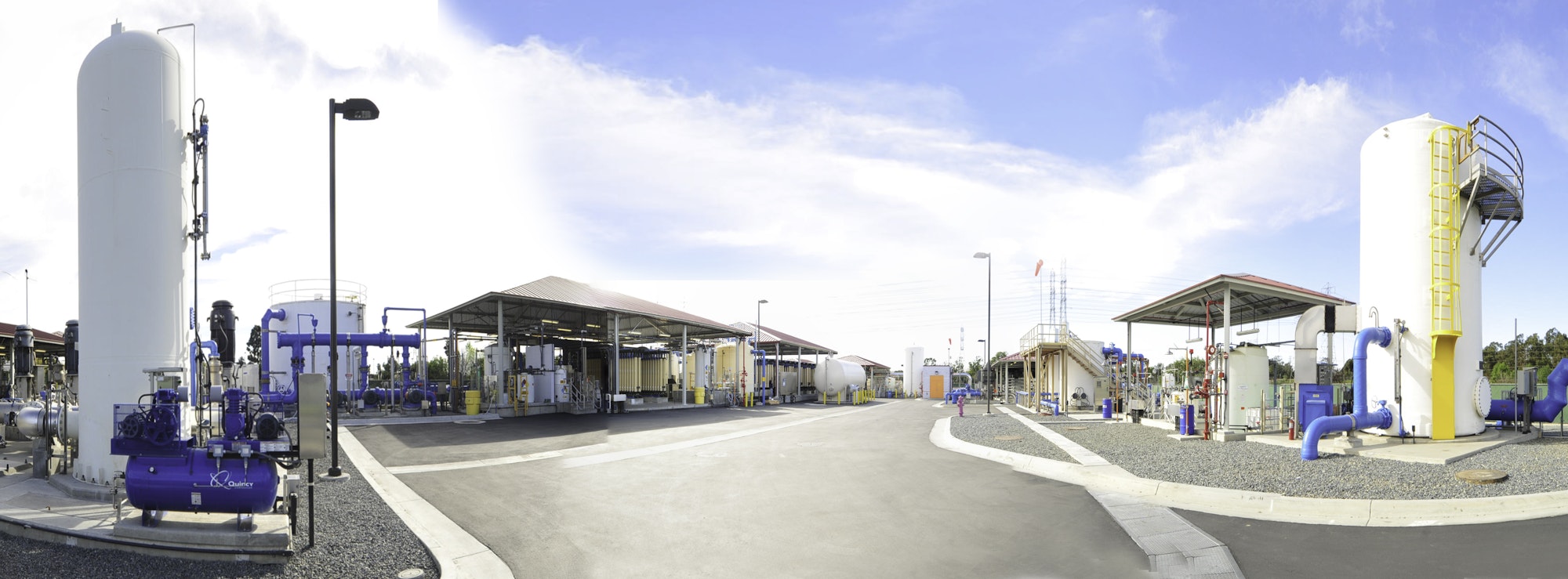
.jpg?ixlib=rb-1.1.0&w=2000&h=2000&fit=max&or=0&s=ed984b7ae8fe234b5c76dbe0a25d73ec)
The Robert W. Goldsworthy Desalter has been operating since 2002 to remove brackish groundwater from a saline plume in the Torrance area that was stranded inland of the West Coast Basin Barrier after the barrier was put into operation in the 1950s and 1960s.
The production well and desalting facility are located within the City of Torrance (City), and the product water is delivered for potable use to the City’s distribution system. The treatment plant capacity is about 2,200 AFY.
The Robert W. Goldsworthy Desalter works through reverse osmosis treatment. Salty water extracted from the aquifer is forced through reverse-osmosis (RO) membranes and the salt is removed from the water. After the water passes through the membranes, the pH is adjusted and the water is disinfected. Once treated, the water is of very high quality and exceeds all federal and state drinking water standards. The City is responsible for operation and maintenance of the treatment plant under contract with WRD.
The District is currently completing an expansion of the Goldsworthy Desalter facility that will increase the treatment capacity to 4,800 AFY with the addition of two new source water wells, associated conveyance pipelines and pump stations.


Recycled water or reclaimed municipal wastewater has been successfully used for groundwater recharge by WRD since 1962. Recycled water provides a reliable source of high quality water for surface spreading in the Montebello Forebay and for injection at the seawater intrusion barriers.
In light of the recurring drought conditions in California and uncertainties about future water availability and increasing cost of imported water supplies, recycled water has become increasingly vital as a replenishment source.
WRD participates in research and monitoring activities, proactively contributes to the regulatory and legislative development processes, and engages in information exchange and dialogue with regulatory agencies and other recycled water users to ensure that the use of recycled water remains safe and reliable. The District continues to closely coordinate with the Sanitation Districts of Los Angeles County (SDLAC), which produces the recycled water used for surface spreading in the Montebello Forebay, on permit compliance activities, including groundwater monitoring, assessment, and reporting. Many monitoring and production wells are sampled frequently by WRD staff, and the results are reported to the regulatory agencies.
In response to the prolonged drought, WRD worked closely with the regulatory agencies to allow a greater amount of recycled water to be used for spreading at the Montebello Forebay Spreading Grounds, through an amendment of the existing permit in 2014. This amendment will allow WRD to continue to utilize recycled water even when storm water and imported water become scare or unavailable.
.png?ixlib=rb-1.1.0&w=2000&h=2000&fit=max&or=0&s=4c3c1f6ec9e64d3eb4bdbdb27744b3aa)

The Groundwater Resources Planning Program was instituted to evaluate basin management issues and to provide a means of assessing project impacts in the District’s service area.
Prior to moving forward with a prospective project, an extensive evaluation is undertaken. Within the Groundwater Resources Planning Program, new projects and programs are analyzed based on benefits to overall basin management. This analysis includes performing an extensive economic evaluation to compare estimated costs with anticipated benefits, including evaluation of state and federal funding programs to determine applicability to the District’s list of prospective projects. Additionally, as part of the evaluation process, all capital projects are brought to the District’s Technical Advisory Committee for review and recommendation. The culmination of this review and evaluation process is the adoption of the five - year Capital Improvement Program (“CIP”) by the District’s Board of Directors.


The groundwater quality program is an ongoing effort to address water quality issues that affect WRD projects and the pumpers’ facilities.
The District monitors and evaluates the impacts of proposed, pending and recently enacted drinking water regulations and legislation. The District assesses the justification and reasoning used to draft these proposals and, if warranted, joins in coordinated efforts with other interested agencies to resolve concerns during the early phases of the regulatory and/or legislative process.
Annually, the District offers a groundwater quality workshop to provide information on the latest water quality regulations, state of the groundwater in the local basins, information on the cutting edge technology for contaminant removal or well rehabilitation, and other topics that are of key interest to the District’s water purveyors.
The District continually evaluates compliance with current and anticipated water quality regulations in production wells, monitoring wells, and spreading/injection waters of the basins. WRD proactively investigates any potential non-compliance situations to confirm or determine the causes of noncompliance, develops recommended courses of action and estimates their associated costs to address the problem, and implements the best alternative to achieve compliance.
Effective January 1, 2007, the District assumed responsibility for the Central Basin Title 22 Groundwater Monitoring Program. The program involves working with participating pumpers to comply with regulatory requirements for well water monitoring.
Also included within the Groundwater Quality Program is monitoring both surface spreading and injection activities for water quality constituents including Constituents of Emerging Concern (CECs) and the Groundwater Contamination Prevention Program which aims to minimize or eliminate threats to groundwater by identifying potential contamination sources above and below ground.


The WRD's Geographic Information System (GIS) is composed of map layers containing spatial information and an extensive database containing tabular information. The database includes water level and water quality data for the entire WRD service area.
Information is obtained not only from the District's Regional Groundwater Monitoring Program, but also water quality data acquired from the California State Water Resources Control Board Division of Drinking Water.
Additionally, the tabular data contains detailed information on well construction, historical groundwater production, historical replenishment water purchases and other elements related to the WRD's operations. The District's GIS software essentially merges these two data sources, thus allowing the vast amounts of data contained in the tabular databases to be displayed graphically on their associated map layers. The system requires continuous update and maintenance but serves as a powerful tool for understanding basin characteristics and overall basin health.
The GIS, in conjunction with the District's Regional Groundwater Model, is used to provide better planning and basin management. The system is used to organize and store an extensive database of spatial information, including well locations, water level data, water quality information, well construction data, production data, aquifer locations, and computer model files. Specific information is available to WRD pumpers and stakeholders through its web-based interactive well search tool which provides users with access to the District’s water quality and production database.


WRD has been monitoring groundwater quality and water levels in the CBWCB for over 50 years. The Regional Groundwater Monitoring Program provides for the collection of basic information used for groundwater basin management including groundwater level data and water quality data.
It currently consists of a network of over 300 WRD and USGS-installed monitoring wells at over 55 locations throughout the District, supplemented by the existing groundwater production wells operated by the water purveyors. The information generated by this program is stored in the District’s GIS and provides the basis to better understand the dynamic changes in the Central Basin and West Coast Basin. WRD hydrogeologists and engineers, provide the in-house capability to collect, analyze and report groundwater data.
Water quality samples from monitoring wells are collected twice a year and analyzed for numerous common constituents as well as “special study constituents” on a case by case basis. Water levels are measured in most monitoring wells with automatic data loggers daily, while water levels in all monitoring wells are measured by WRD field staff a minimum of four times per year. On an annual basis, staff prepares the Regional Groundwater Monitoring Report that documents groundwater level and groundwater quality conditions throughout the District. This report is distributed to the stakeholders in WRD and is also available on the District’s website. In 2011, the National Groundwater Associated presented WRD with the “2011 Groundwater Protection Project Award” in recognition of the regional groundwater monitoring program.
WRD is also the designated groundwater monitoring entity for the CBWCB under the State of California’s CASGEM program (California Statewide Groundwater Elevation Monitoring). WRD collects water level data from 28 of its nested monitoring wells and uploads it to the State’s CASGEM website on a regular basis for seasonal and long-term water level trend tracking. Public access to the CASGEM website is at www.water.ca.gov/groundwater/casgem.


WRD’s Safe Drinking Water Program (“SDWP”) has operated since 1991 and is intended to promote the cleanup of groundwater resources at specific well locations. Through the installation of wellhead treatment facilities at existing production wells, the District removes contaminants from the underground supply and delivers the extracted water for potable purposes. Projects implemented through this program are accomplished in collaboration with well owners.
One component of the program focuses on the removal of VOCs and offers financial assistance for the design, equipment and installation at the selected treatment facility. Another component offers zero-interest loans for secondary constituents of concern that affect a specific production well. The capital costs of wellhead treatment facilities range from $800,000 to over $2,000,000. Due to financial constraints, the initial cost is generally prohibitive to most pumpers. Financial assistance through the District’s SDWP makes project implementation much more feasible.
There are several projects in various stages of implementation and new candidates for participation are under evaluation. A total of 16 facilities have been completed and are online and one facility has successfully completed removal of the contamination and no longer needs to treat.
The guidelines of the SDWP place a greater priority on projects involving VOC contamination or other anthropogenic (man-made) constituents, classified as Priority A Projects. Treatment projects for naturally-occurring constituents are classified as Priority B Projects and funded as a secondary priority, on a case-by-case basis and only if program monies are still available during the fiscal year. The District recently revised the Safe Drinking Water Program to include a revolving fund plan for Priority B Projects and implementation of a revitalization plan to maximize program participation.
The Safe Drinking Water Program also includes a third component, the Disadvantaged Communities (DAC) Program, which will provide assistance to water systems in disadvantaged areas with applying for state or federal funding.


This Project involves the delivery of recycled water from the City of Los Angeles Department of Public Works - Bureau of Sanitation (BOS) Terminal Island Water Reclamation Plant/Advanced Water Treatment Facility (AWTF) to the Dominguez Gap Barrier (DGB).
Prior to injection at the barrier, the recycled water produced at the AWTF undergoes advanced treatment processes including microfiltration, reverse osmosis, and chlorination. The DGB injection project was permitted by Los Angeles County Water Quality Control Board (LARWQCB) in conjunction with Department of Drinking Water (DDW) for up to 5 mgd of recycled water and 50% recycled water contribution. Water quality requirements, including turbidity and modified fouling index (MFI), must also be satisfied to minimize potential fouling of DGB injection wells owned and operated by the County of Los Angeles Department of Public Works. WRD is working with BOS to expand the amount of recycled water produced for the DGB, with the ultimate goal of eliminating all potable water used for barrier injection.
While BOS is responsible for the treatment and the water quality monitoring of the recycled water and LADWP for the delivery of the recycled water to the DGB, WRD has responsibility for groundwater monitoring and compliance. As part of the DGB injection permit requirements, WRD conducts groundwater monitoring to measure and track water quality conditions, evaluate potential impact of recycled water on groundwater, and identify potential problems well before recycled water arrives at any downgradient drinking water wells.
In addition, an extensive tracer study was conducted from the start of recycled water injection to determine the extent of travel and movement of the recycled water blend through the aquifers. The tracer study confirmed that after injection, adequate mixing and further blending of recycled water with diluent water occurs in the ground and that groundwater samples collected were representative of the recycled water blend.
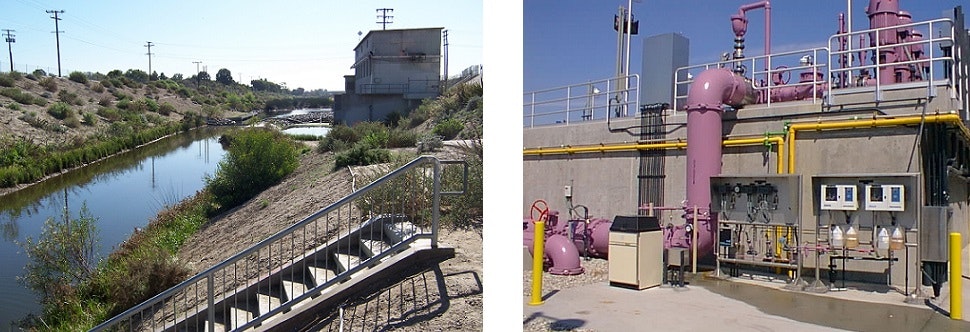
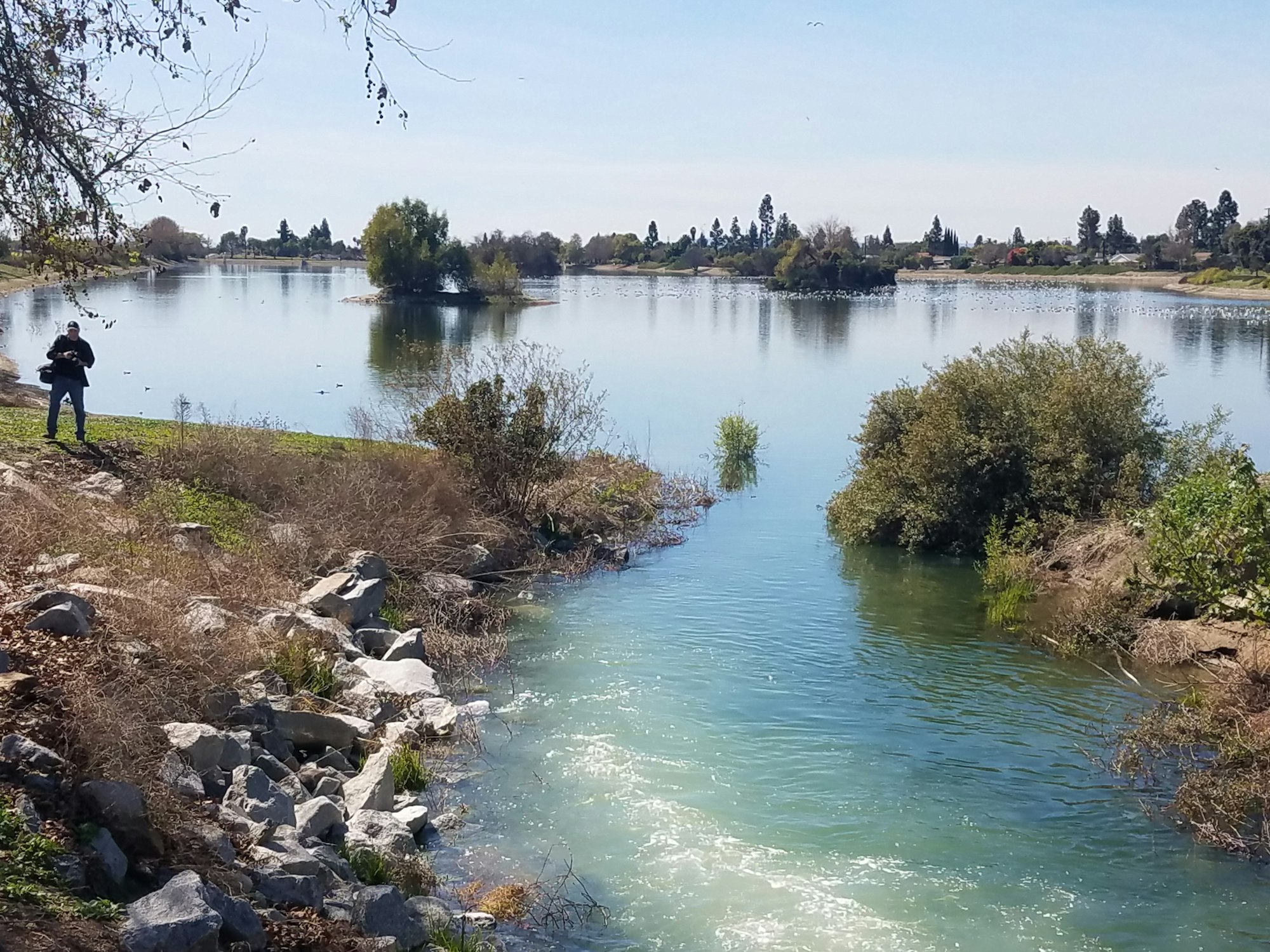
WRD’s Replenishment Operations Program is in place to ensure timely and cost-effective water supply deliveries to two important water infrastructure systems owned and operated by the Los Angeles County Department of Public Works (LACDPW): the Montebello Forebay Spreading Grounds (consisting of the San Gabriel and Rio Hondo Coastal Spreading Grounds), as well as the coastal Seawater Barrier Injection Wells.
Montebello Forebay Spreading Grounds – Initially created for flood control, the spreading grounds are large pond-like basins carved out overtop a special geologic area, called the Montebello Forebay, where multiple aquifers meet at the earth’s surface. The result is an area referred to as an ‘unconfined aquifer’ that can act as a large sponge to infiltrate water and replenish the groundwater aquifers. Historically, WRD purchased imported water from Northern California and the Colorado River to supplement stormwater flows to the spreading grounds. However with the completion of the WRD Water Independence Now (WIN) program in 2019, the spreading grounds are supplied using stormwater and recycled water solely.
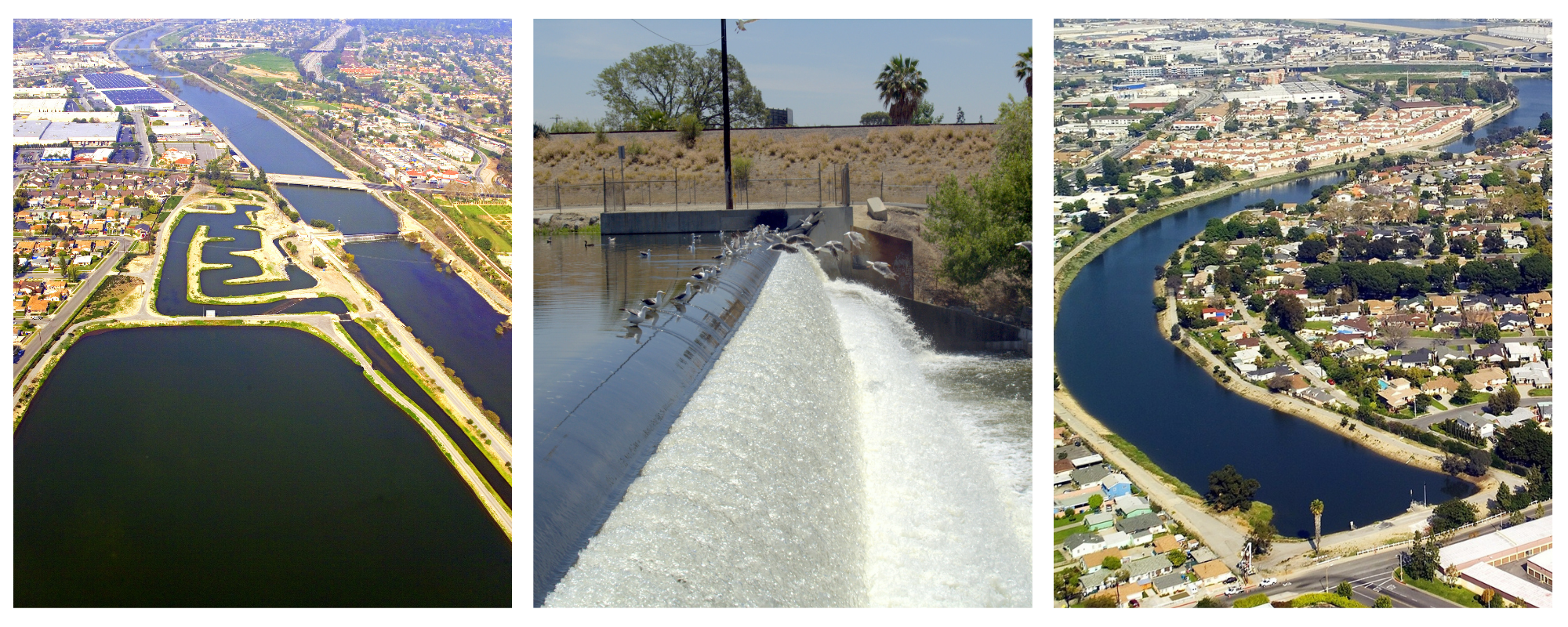
Seawater Barrier Injection Wells – Along the coast, replenishment takes a different form. Freshwater injection wells are used to actively pump freshwater into the underlying aquifers. The injection wells serve two purposes: they create a pressure gradient that prevents seawater from intruding into the groundwater aquifers, and they simultaneously help replenish the West Coast and Central Basins. Historically, only imported water was permitted to supply the injection wells, however by working with state regulators, WRD championed the permitted use of first 50%, and then 100% advanced purified recycled water to meet the seawater barriers’ demand.
With the completion of WRD’s WIN program, the infrastructure and capacity to supply the barriers with 100% recycled water was built out; however, due to operational limitations and regulatory requirements, WRD still purchases small amounts of imported water to supply the seawater barriers annually. WRD is working with its regional partners to replace all use of imported water with advanced purified recycled water.
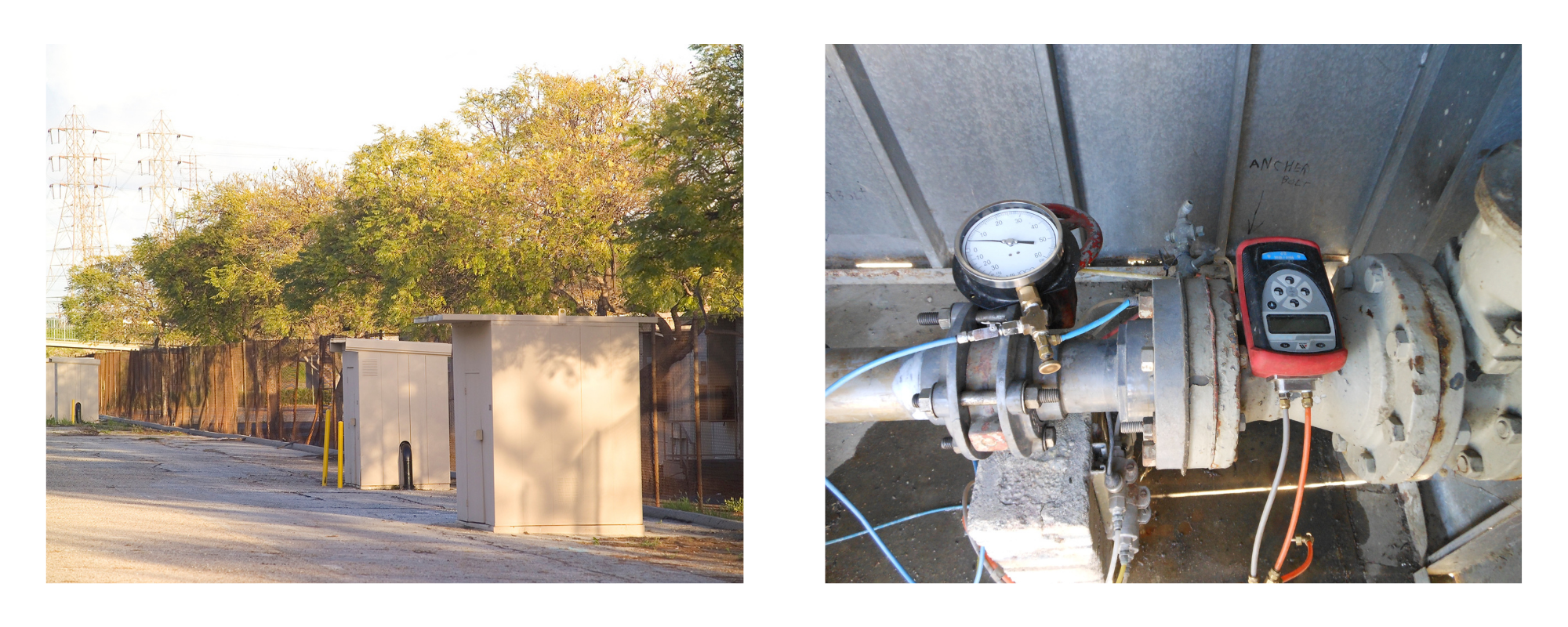

This program accounts for the projects and programs related to Hydrogeologic investigations of the District and surrounding areas to ensure safe and reliable groundwater.
Our hydrogeologists collect extensive amounts of data to calculate the change in groundwater storage, determine the annual and accumulated overdraft, evaluate pumping amounts, and assess replenishment water availability. This information, along with maps of groundwater levels and production patterns in the basins, is published in easy to read two page technical bulletins and in the annual Engineering Survey and Report.
One key project our Hydrogeologists are working on is called the Hydrogeologic Conceptual Model – a model to better characterize the Central and West Coast Groundwater Basins. The model incorporates data gathered during drilling and logging of WRD/USGS monitoring wells and historical information from oil and production wells throughout the basins. This model is an essential tool for our staff, groundwater pumpers, and other basin stakeholders with planning for groundwater resources projects such as new well drilling, storage opportunities, or modeling studies.
The Hydrogeology program also includes analysis associated with ensuring regulatory compliance and protecting our groundwater from potential water quality concerns. This includes work on the state required Salt/Nutrient Management Plans and modeling or tracer tests to better understand groundwater flow and movement of injected recycled water.


The Engineering Department provides technical, engineering, program management, and hands on support on capital improvement projects ranging from concept development through engineering design, project management and construction inspections.
Our engineers are responsible for developing, updating, and managing the capital improvement program (CIP) and its related projects. They prepare and/or oversee the preparation plans, specifications and engineer’s estimates of probable construction costs (PS&E’s), or creates request for proposals/qualifications (RFPs/RFQs) for professional engineering consultation and construction management services depending on the size and specific needs of the project.
This department receives and reviews public bids to provide recommendations to various committees and the Board of Directors and also applies, secures, and administers/manages grants from various, Federal, State, and Local organizations to supplement funds allocated by WRD. To ensure compliance with Board goals and objectives, our engineers monitor construction work in progress, review/approve progress pay estimates, and provide quality assurance/control oversight services on approved development projects.
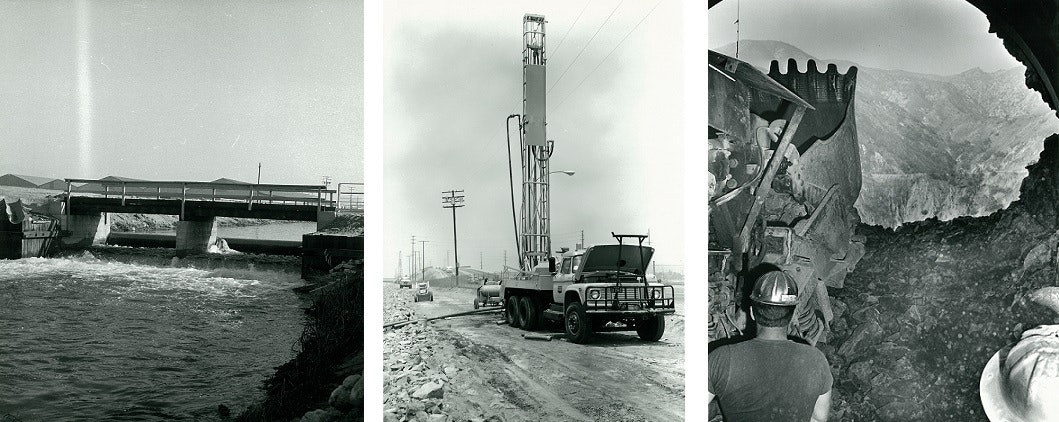

As part of its stewardship of the water basins, the District provides educational programs regarding our groundwater basins and the District’s projects and programs to manage and protect our groundwater resources.
The WRD Education Program features interactive student activities that focus on the importance of groundwater, the process of water treatment, and the need for conservation. WRD staff visit schools personally to participate in science curriculum related events and also provide no-cost, hands-on teacher training through the Project WET (Water Education for Teachers) Foundation.
WRD’s Education Program also includes social media outreach, participation at community events within the District’s service area, presentations and involvement at local, state, and national water industry association events, and extensive print and digital outreach regarding District projects and programs. WRD engineers and hydrogeologists also conduct tours of recharge and water treatment facilities and serve as an informational resource for the public, the press, and elected officials regarding regional water resources and management practices.


WRD routinely works with the community and other stakeholders to promote water conservation throughout the District’s service area.
The Water Conservation program includes hands-on conservation trainings that have translated into an effective reduction in water demand and usage in the region. The Eco Gardener Training Program trains residents, gardeners, and landscape maintenance crews to become more responsible “green” gardeners by implementing water conservation practices in outdoor landscapes. WRD directly demonstrates these concepts within the Lillian Kawasaki Demonstration Garden.
WRD also promotes water conservation through the distribution and promotion of easy to use water conservation tools for local homeowners including automatic shut-off hose nozzles, buckets for catching greywater, and 5-minute shower timers.


The District developed a new Well Construction and Rehabilitation Loan Program (Program) to assist groundwater producers within its service area to increase their groundwater pumping capabilities. This Program will improve the producers' ability to utilize their full groundwater extraction rights and reduce their need for imported water. The Program will provide 10-year, zero percent interest loans, up-front capital, and expert assistance with the design, construction, and implementation of new production wells and well rehabilitation projects.
The District developed a new Well Construction and Rehabilitation Loan Program (Program) to assist groundwater producers within its service area to increase their groundwater pumping capabilities. This Program will improve the producers' ability to utilize their full groundwater extraction rights and reduce their need for imported water. The Program will provide 10-year, zero percent interest loans, up-front capital, and expert assistance with the design, construction, and implementation of new production wells and well rehabilitation projects.
Interested groundwater producers are encouraged to apply. Projects for the Program will be approved based on the review of completed applications, eligibility, and prioritization criteria established by the District. Groundwater producers with completed applications will be placed on a candidate list for loan consideration. Note that any portion of the project commenced prior to executing a Funding Agreement will not be eligible for funding. Please complete the application below. If you have any questions, please contact Esther Valle Rojas at (562) 275-4259 or erojas@wrd.org.
Application
